Abstract
The meta-cleavage pathway of catechol is a major mechanism for degradation of aromatic compounds. In this pathway, the aromatic ring of catechol is cleaved by catechol 2,3-dioxygenase and its product, 2-hydroxymuconic semialdehyde, is further metabolized by either a hydrolytic or dehydrogenative route. In the dehydrogenative route, 2-hydroxymuconic semialdehyde is oxidized to the enol form of 4-oxalocrotonate by a dehydrogenase and then further metabolized to acetaldehyde and pyruvate by the actions of 4-oxalocrotonate isomerase, 4-oxalocrotonate decarboxylase, 2-oxopent-4-enoate hydratase, and 4-hydroxy-2-oxovalerate aldolase. In this study, the isomerase, decarboxylase, and hydratase encoded in the TOL plasmid pWW0 of Pseudomonas putida mt-2 were purified and characterized. The 28-kilodalton isomerase was formed by association of extremely small identical protein subunits with an apparent molecular weight of 3,500. The decarboxylase and the hydratase were 27- and 28-kilodalton polypeptides, respectively, and were copurified by high-performance-liquid chromatography with anion-exchange, hydrophobic interaction, and gel filtration columns. The structural genes for the decarboxylase (xylI) and the hydratase (xylJ) were cloned into Escherichia coli. The elution profile in anion-exchange chromatography of the decarboxylase and the hydratase isolated from E. coli XylI+XylJ- and XylI-XylJ+ clones, respectively, were different from those isolated from XylI+ XylJ+ bacteria. This suggests that the carboxylase and the hydratase form a complex in vivo. The keto but not the enol form of 4-oxalocrotonate was a substrate for the decarboxylase. The product of decarboxylation was 2-hydroxypent-2,4-dienoate rather than its keto form, 2-oxopent-4-enoate. The hydratase acts on the former but not the latter isomer. Because 2-hydroxypent-2,4-dienoate is chemically unstable, formation of a complex between the decarboxylase and the hydratase may assure efficient transformation of this unstable intermediate in vivo.
Full text
PDF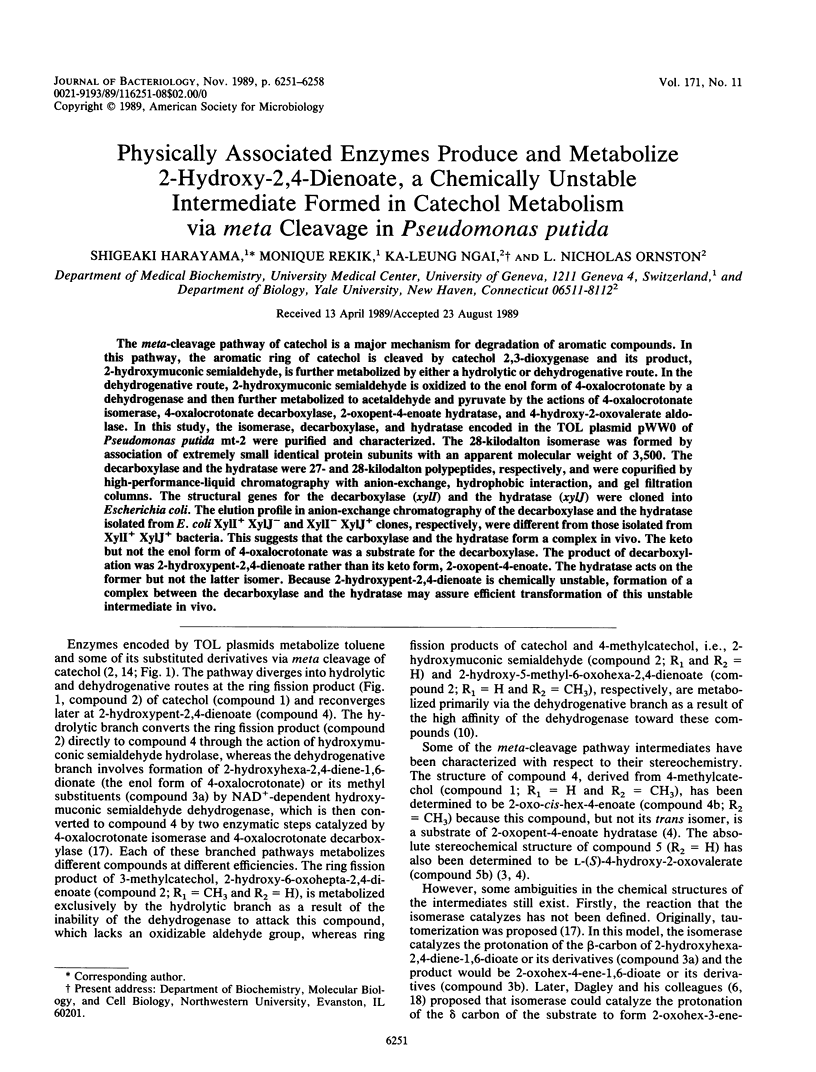
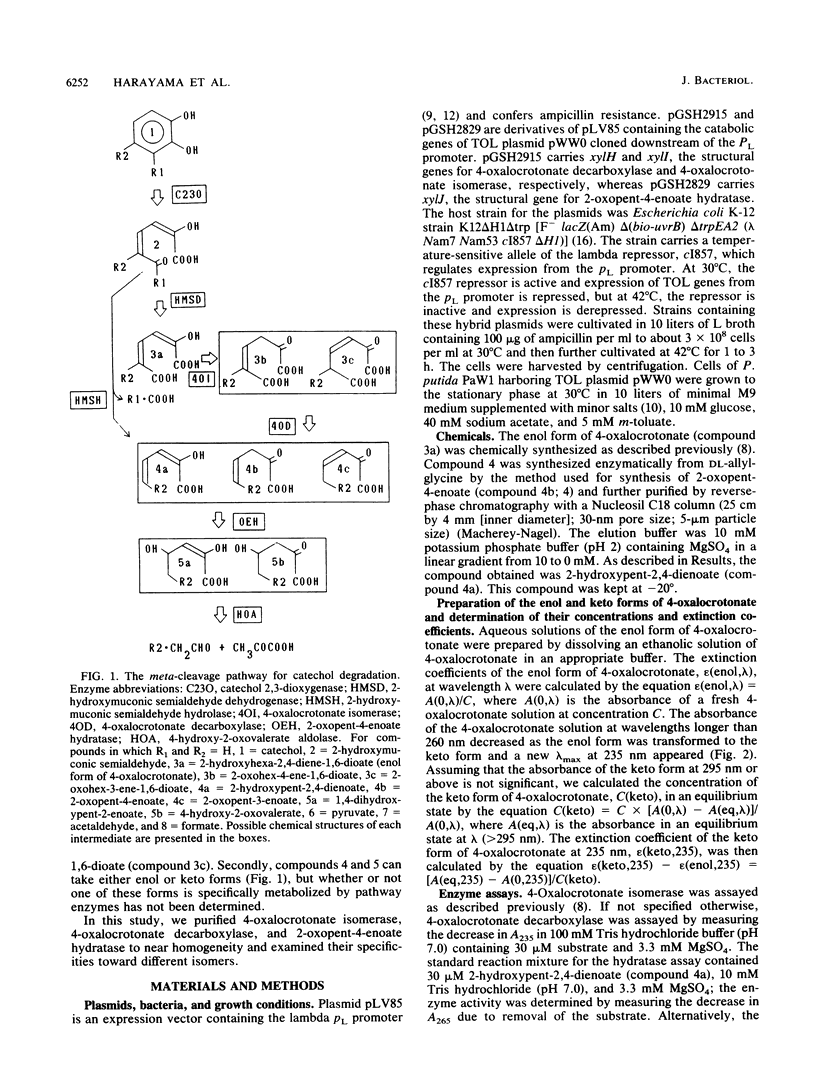
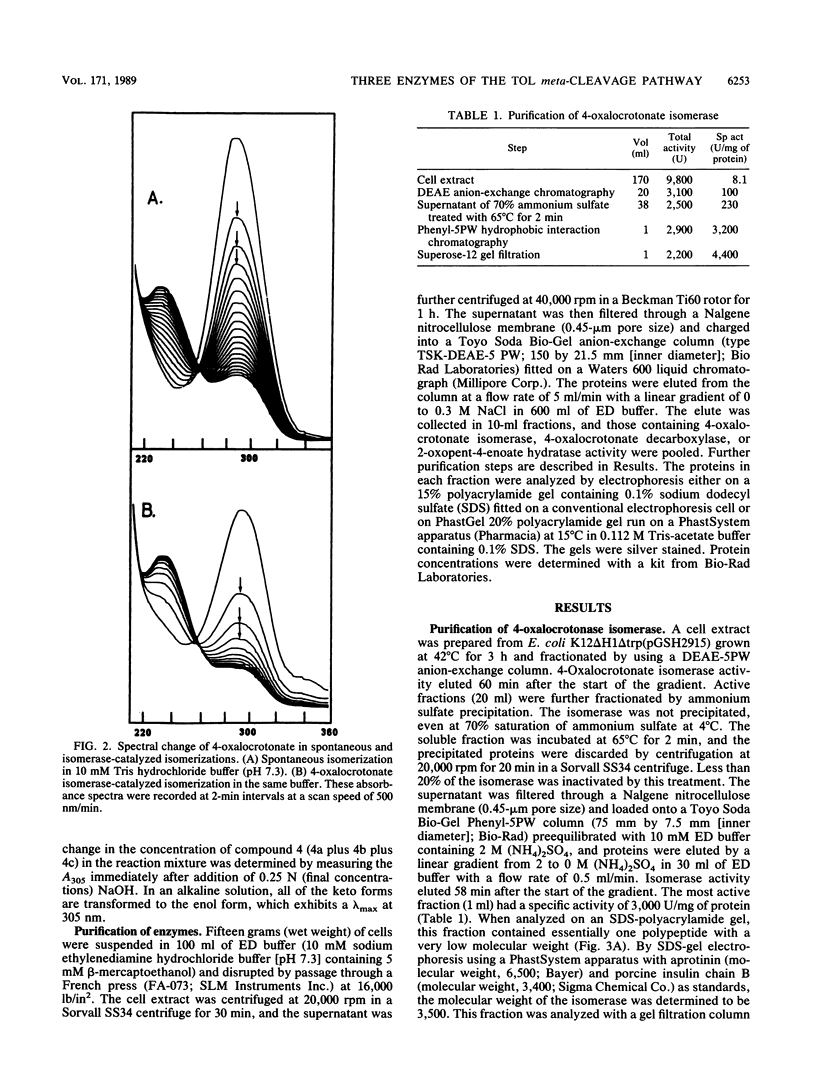
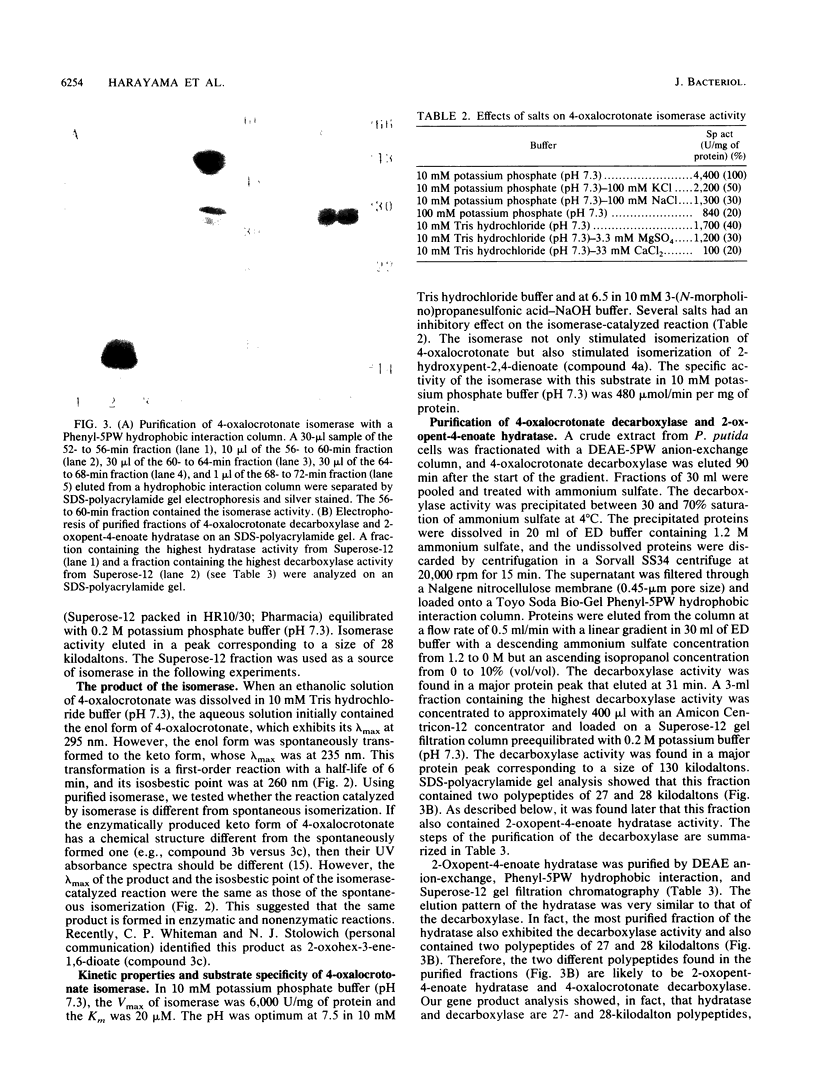
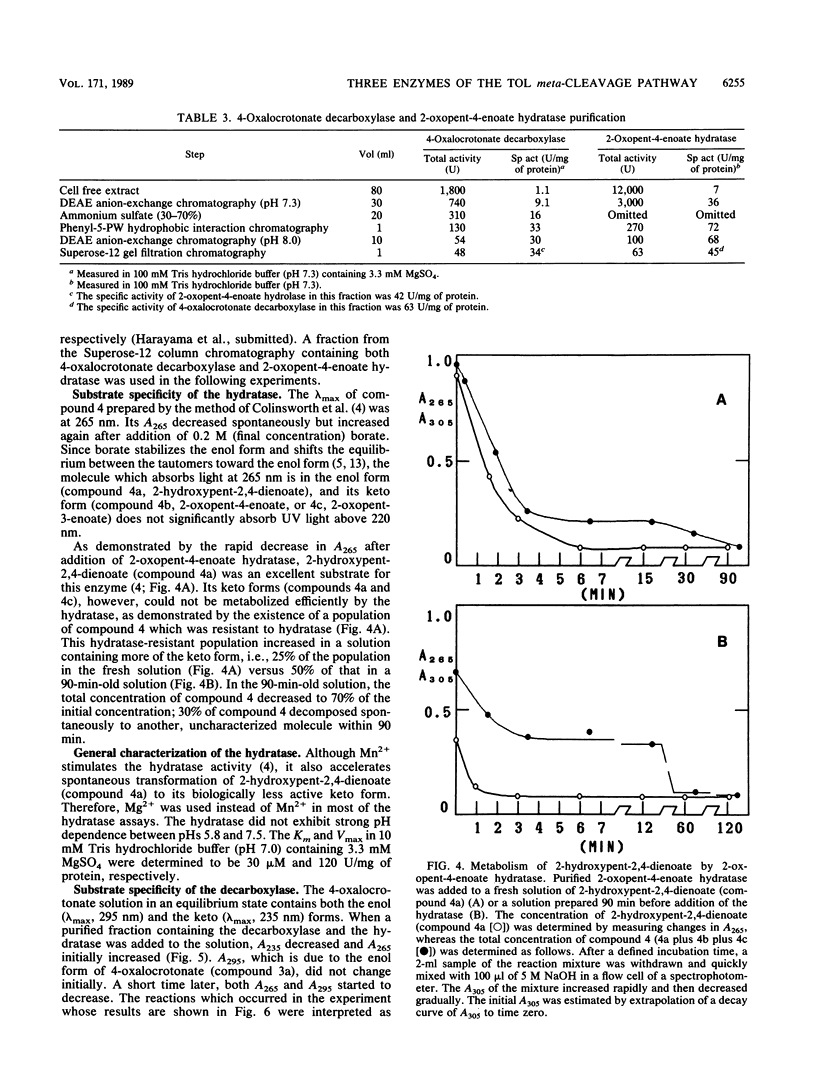
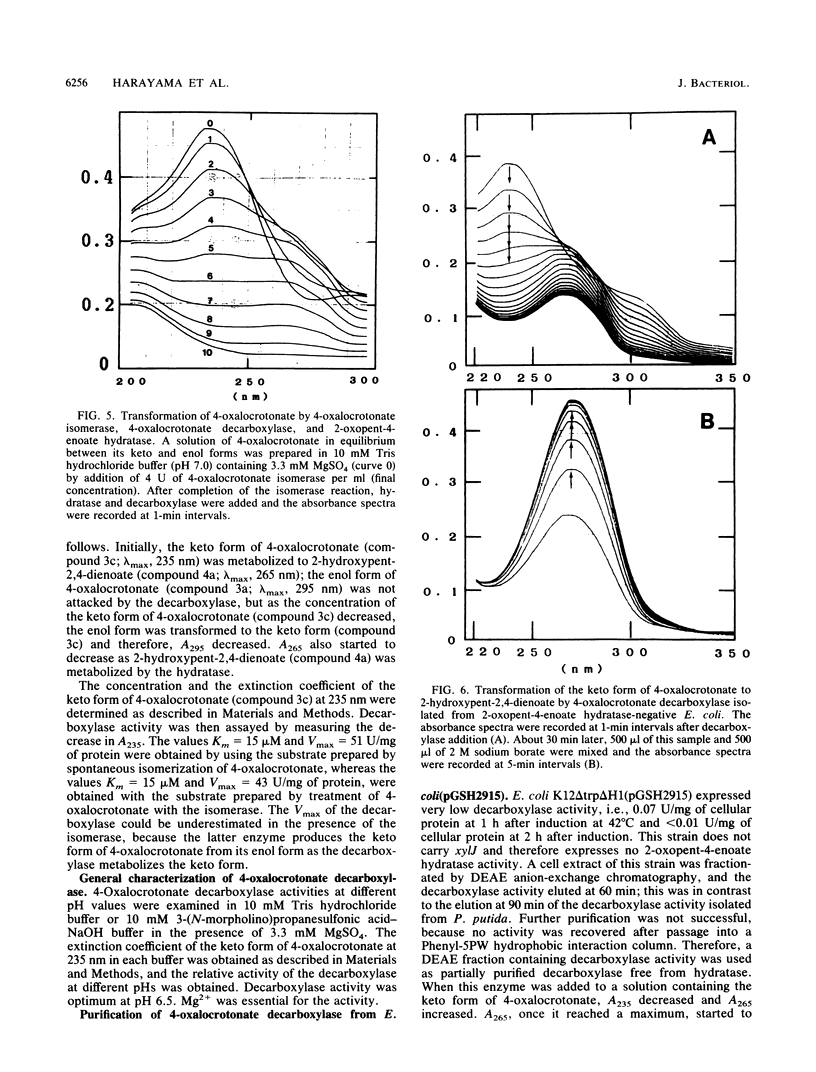
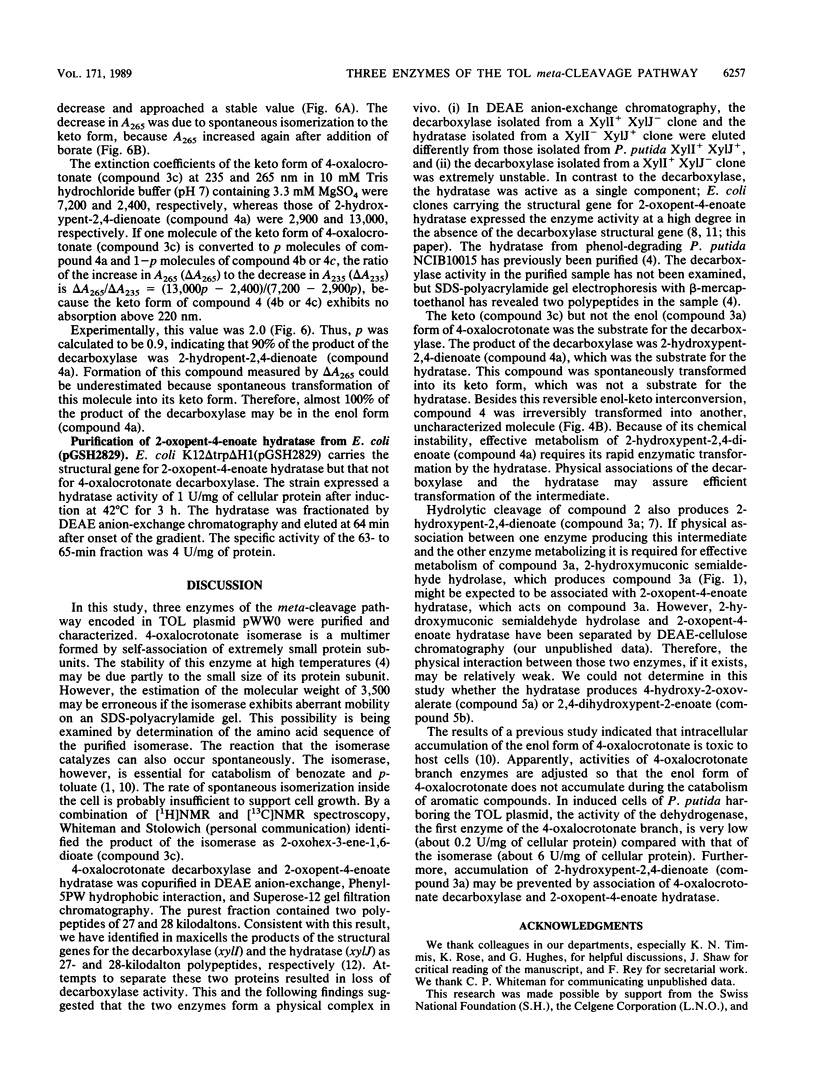
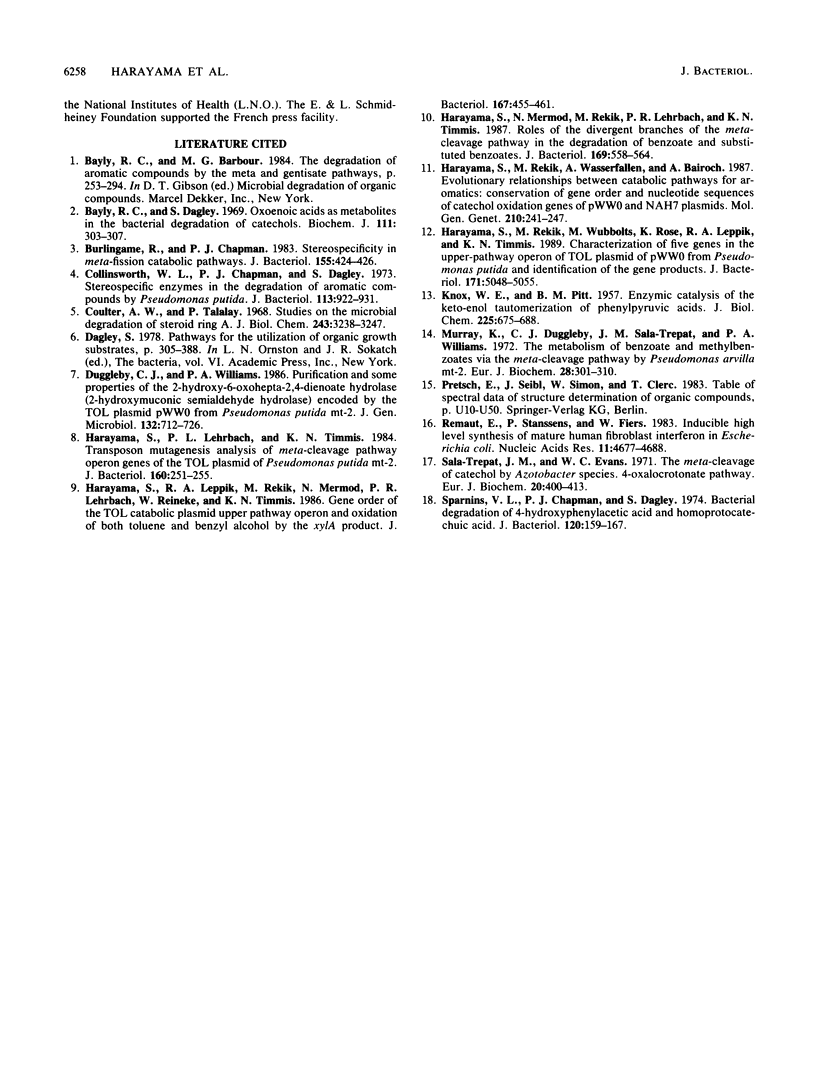
Images in this article
Selected References
These references are in PubMed. This may not be the complete list of references from this article.
- Bayly R. C., Dagley S. Oxoenoic acids as metabolites in the bacterial degradation of catechols. Biochem J. 1969 Feb;111(3):303–307. doi: 10.1042/bj1110303. [DOI] [PMC free article] [PubMed] [Google Scholar]
- Burlingame R., Chapman P. J. Stereospecificity in meta-fission catabolic pathways. J Bacteriol. 1983 Jul;155(1):424–426. doi: 10.1128/jb.155.1.424-426.1983. [DOI] [PMC free article] [PubMed] [Google Scholar]
- Collinsworth W. L., Chapman P. J., Dagley S. Stereospecific enzymes in the degradation of aromatic compounds by pseudomonas putida. J Bacteriol. 1973 Feb;113(2):922–931. doi: 10.1128/jb.113.2.922-931.1973. [DOI] [PMC free article] [PubMed] [Google Scholar]
- Coulter A. W., Talalay P. Studies on the microbiological degradation of steroid ring A. J Biol Chem. 1968 Jun 25;243(12):3238–3247. [PubMed] [Google Scholar]
- Harayama S., Lehrbach P. R., Timmis K. N. Transposon mutagenesis analysis of meta-cleavage pathway operon genes of the TOL plasmid of Pseudomonas putida mt-2. J Bacteriol. 1984 Oct;160(1):251–255. doi: 10.1128/jb.160.1.251-255.1984. [DOI] [PMC free article] [PubMed] [Google Scholar]
- Harayama S., Leppik R. A., Rekik M., Mermod N., Lehrbach P. R., Reineke W., Timmis K. N. Gene order of the TOL catabolic plasmid upper pathway operon and oxidation of both toluene and benzyl alcohol by the xylA product. J Bacteriol. 1986 Aug;167(2):455–461. doi: 10.1128/jb.167.2.455-461.1986. [DOI] [PMC free article] [PubMed] [Google Scholar]
- Harayama S., Mermod N., Rekik M., Lehrbach P. R., Timmis K. N. Roles of the divergent branches of the meta-cleavage pathway in the degradation of benzoate and substituted benzoates. J Bacteriol. 1987 Feb;169(2):558–564. doi: 10.1128/jb.169.2.558-564.1987. [DOI] [PMC free article] [PubMed] [Google Scholar]
- Harayama S., Rekik M., Wasserfallen A., Bairoch A. Evolutionary relationships between catabolic pathways for aromatics: conservation of gene order and nucleotide sequences of catechol oxidation genes of pWW0 and NAH7 plasmids. Mol Gen Genet. 1987 Dec;210(2):241–247. doi: 10.1007/BF00325689. [DOI] [PubMed] [Google Scholar]
- Harayama S., Rekik M., Wubbolts M., Rose K., Leppik R. A., Timmis K. N. Characterization of five genes in the upper-pathway operon of TOL plasmid pWW0 from Pseudomonas putida and identification of the gene products. J Bacteriol. 1989 Sep;171(9):5048–5055. doi: 10.1128/jb.171.9.5048-5055.1989. [DOI] [PMC free article] [PubMed] [Google Scholar]
- KNOX W. E., PITT B. M. Enzymic catalysis of the keto-enol tautomerization of phenylpyruvic acids. J Biol Chem. 1957 Apr;225(2):675–688. [PubMed] [Google Scholar]
- Murray K., Duggleby C. J., Sala-Trepat J. M., Williams P. A. The metabolism of benzoate and methylbenzoates via the meta-cleavage pathway by Pseudomonas arvilla mt-2. Eur J Biochem. 1972 Jul 24;28(3):301–310. doi: 10.1111/j.1432-1033.1972.tb01914.x. [DOI] [PubMed] [Google Scholar]
- Remaut E., Stanssens P., Fiers W. Inducible high level synthesis of mature human fibroblast interferon in Escherichia coli. Nucleic Acids Res. 1983 Jul 25;11(14):4677–4688. doi: 10.1093/nar/11.14.4677. [DOI] [PMC free article] [PubMed] [Google Scholar]
- Sala-Trepat J. M., Evans W. C. The meta cleavage of catechol by Azotobacter species. 4-Oxalocrotonate pathway. Eur J Biochem. 1971 Jun 11;20(3):400–413. doi: 10.1111/j.1432-1033.1971.tb01406.x. [DOI] [PubMed] [Google Scholar]
- Sparnins V. L., Chapman P. J., Dagley S. Bacterial degradation of 4-hydroxyphenylacetic acid and homoprotocatechuic acid. J Bacteriol. 1974 Oct;120(1):159–167. doi: 10.1128/jb.120.1.159-167.1974. [DOI] [PMC free article] [PubMed] [Google Scholar]



